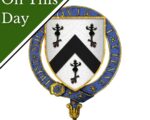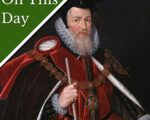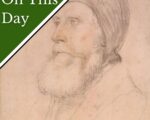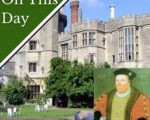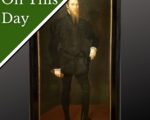On this day in Tudor history, 2nd August 1514, Edward Stafford, Duke of Buckingham, was granted a licence to found a college at Thornbury in Gloucestershire.
There had been a manor there since the 10th century, but it was Buckingham who built Thornbury Castle. He obtained a licence to crenelate his manor in 1510 and building work began in 1511. Thornbury was built to the medieval quadrangular layout, with a large outer courtyard. The entrance front with its central gatehouse and octagonal corner towers is still standing, as are two of the side ranges. The surrounding curtain wall is intact on three sides.
Buckingham never saw it completed. He was executed in 1521. The manor was seized by Henry VIII, who stayed there with Anne Boleyn in 1535.
[Read More...]
